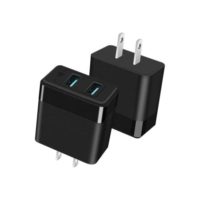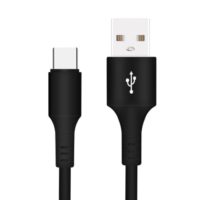How to purchase the right power bank for you?
No matter what is the worth or the quality of our smartphones, without charged batteries, they are of no use.
Thankfully, we have power banks to charge our smartphones on the go.
Choosing the right power bank for your particular use can be difficult. Knowing what the different specifications mean and whether they will affect the performance in the way you use it may not be obvious.
Power banks come in all shapes and sizes, and with a large variety in the sizes, capacities and there is also the battery technology choice as well. All these factors mean that there are several points to consider when buying the right power bank for your particular use.
1. Match the charge capacities: One of the most important points to consider when buying or selecting a power bank is the capacity required. Think about what needs to be charged because a tablet takes more than a smartphone and so forth. Also, some smartphones take more charge than others. To find out take a look at your smartphone specification. The battery capacity will be given under the battery area.
The charge is measured in mAh. This means milliamp hours. So a thousand mAh battery would supply 1000 mA, i.e. 1 A for one hour. Older phones probably had capacities of under 1000 mAh, but modern ones can be up to 3000 mAh. For example, an iPhone X has a battery capacity of 2716 mAh, etc.
To provide a complete charge the power bank capacity must be slightly more than that of the device to be charged – it is always best to have a bit extra to make sure the device gets a full charge.
It is worth noting that the batteries in tablets have much larger batteries, so you’ll need a much bigger power bank if you are to charge a tablet.
2. Power bank output charge current: When buying a power bank it’s also important to think about the rate at which it can deliver charge. This affects the charge time.
You can gain an idea of what is needed from the chargers that are provided with the device. Many small USB devices only expect a charge current of about half an amp, phones may take about an amp and tablets around 2.5 amps.
If anything has a fast charge capability then it will take more current, possibly 3 amps. With more devices having this capability it is worth taking note.
Normally the power banks will say what current they can deliver. The lower the maximum current it can provide, the longer it will take to charge the device. Some larger power banks have multiple outputs and each output will be specified and often written on the power bank. However, be aware that if a device has multiple outputs then it may not be able to deliver the maximum current to all the outputs at the same time.
So if you want to get fast charge times, then buy a power bank with high output current. If the phone or device cannot take the maximum current, don’t worry, it will only take what it can handle.
3. The number of ports: Early power banks only had a single output port, but with people using them more and more and wanting to charge multiple devices at the same time, many of the larger power banks come with two and sometimes more ports. Just check that the output current capabilities for each port – are they enough? Also remember that if multiple devices are charged at the same time, the power bank may not give the maximum current to each port, there may be an overall maximum current output which will be shared between the outputs, slowing down the charging of the devices.
4. Size & weight: Size and weight are important considerations when buying a power bank, especially if you are going to use it when traveling. The greater the capacity of the power bank the larger and heavier it will be.
5. Lithium-ion vs lithium polymer: There are two main battery technologies used with power banks: lithium-ion and lithium polymer. Although very similar in most respects there are a few minor differences. Lithium-ion is their high power density, lack of what’s called the memory effect (when batteries become harder to charge over time), and their significantly lower cost than lithium-polymer. Lithium-polymer batteries are generally more robust and flexible, especially when it comes to the size and shape of their build and they tend to last longer. They are also lightweight, have an extremely low profile, and have a lower chance of suffering from leaking electrolyte.
Some power bank specifications will state whether they are lithium-ion or lithium-polymer, but not all.

6. Charging connectors: Although the output on power banks is almost universally a USB Type-A – the large USB connector that is used to interface with USB chargers, flash memory drives, etc, the connector used to charge the power bank is different.
Typically it is a micro-USB, and occasionally a mini-USB, but some recently have incorporated a lightning connector so it can be charged by an Apple charger, with an Apple lead, reducing the number of different leads needed.
7. How to charge the power bank: It is worth remembering that you will need to charge the power bank itself. The larger the capacity, the longer it will take. If you only have a 1 amp charger and the power bank has a capacity of 5000 mAh, then it will take five hours to charge – well a little longer because not all the charge that enters the power bank is converted to stored charge, there is an efficiency factor of possibly 80% or more, so it will take longer.
8. Cables: When buying a power bank, don’t forget the cables. Not all power banks come with cables, either for charging devices from the power bank or for charging the power bank itself. Especially the budget power banks may not come with cables, assuming you will provide your own.







Leave A Comment